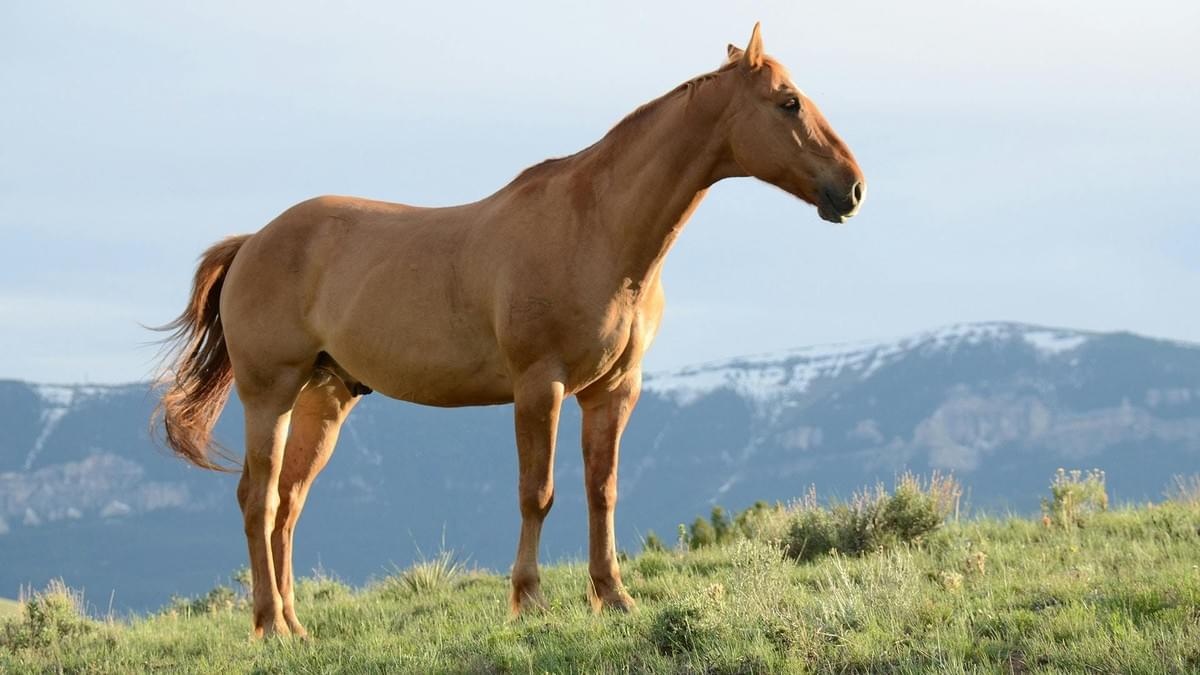
The history of wild horses in the United States stretches back tens of millions of years. Horses are the descendants of the much smaller Eohippus, a dog-like animal that lived roughly 50 million years ago in what is today the Tennessee Valley. However, the Eohippus left the region after evolving into the Equus, a genus of Equidae mammals that now includes horses, mules, and zebras. Early horses exited the North American continent between 11,000 and 13,000 years ago and migrated to Africa and Asia over the land bridge that then existed between Siberia and Alaska.
Horses did not exist in what is now the United States until the early- to mid-1500s. In 1519, Spanish explorer Hernan Cortes arrived in Mexico with settlers and European horses. Over time, numerous horses escaped into the wild, while others were taken by indigenous peoples along trade routes headed north.
It did not take long for horses to grow accustomed to their new environment. According to writer J. Frank Dobie, America’s wild horse population exceeded 2 million during the 19th century. Over the following decades, several events greatly diminished the nation’s wild horse population.
Horse hunting was popular among various groups. While some hunted horses for food, others did so for sport. More perilous were the corporate-sponsored hunters who killed horses en masse to be used for chicken feed and dog food. As hunting methods advanced with technology, horse numbers fell precipitously. Popular methods ranged from chasing horses to exhaustion using motorized vehicles to spraying buckshot at herds from a helicopter.
Wild horses, known as mustangs, were greatly impacted by World War I. More than 1 million mustangs were taken overseas as combat mounts and laborers and used for food. For a time, it appeared the story of the North American mustang would be similar to that of the American bison, which was hunted almost to the point of extinction and has only stabilized in recent decades.
Velma Johnston, or Wild Horse Annie, is one of the most important figures in the history of North American wildlife conservation. One day during the 1950s, Johnston followed a trail of blood on the road to a horse rendering factory, where she discovered the gruesome methods of killing horses and shipping them from the West Coast to other parts of the country. Horse conservation became her passion, and in 1959 she achieved her goal, in part, with the passage of a law that prohibited the use of motorized vehicles, including aircraft, to hunt wild horses.
Johnston played a pivotal role in protecting America’s mustangs, but it was the nation’s children who secured broader protections for horses. Throughout 1971, Congress received more letters about the carnage of American horses than any non-war topic in the history of the country. One congressman said he received upwards of 14,000 letters. Congress unanimously passed the Wild Free-Roaming Horse and Burro Act, which was signed into law by President Richard Nixon on December 15, 1971.
The Wild Free-Roaming Horse and Burro Act was later revised by the Federal Land Policy and Management Act and the Public Rangelands Improvement Act. Within three years of the first law, wild horse numbers increased from 17,000 to 42,000, though subsequent studies suggest the 1971 estimate may have been low. Today, there are roughly 33,000 wild horses in the US, half of which reside in Nevada.
Wild horses remain protected but continue to face many challenges from both citizens and lawmakers. Individuals interested in learning about how to protect mustangs can visit americanwildhorse.org.
